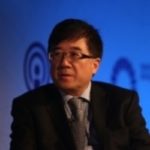
Wen Tong
Dr. Wen Tong – Keynote Speaker
Title: The Directions for 6G
Abstract: In this talk, we present our view on 6G technologies, its trends and research directions. We highlight the six foundational pillars which will define the emerging 6G wireless. In general, 6G is the next-generation advanced mobile communications system, but it will go far beyond communications. 6G will serve as a distributed neural network that provides communication links to fuse the physical, cyber, and biological worlds, truly ushering in an era in which everything will be sensed, connected, and intelligent. This in turn will a truly societal fabric for Intelligence of Everything in the decades to come. We discuss the 6G innovations and associated research challenges in the following areas:
(1) Native AI: 6G air interface and network designs will leverage E2E AI and machine learning to implement customized optimization and automated O&M. Each 6G network element will natively integrate communication, computing, and sensing capabilities. A distributed machine learning architecture built on deep edge intelligence will be key to meeting the large-scale intelligence requirements
(2) Networked Sensing: 6G communications systems will integrate wireless sensing capabilities to explore the physical world through radio wave transmission, echo, reflection, and scattering. They will also provide high-resolution sensing, localization, imaging, and environment reconstruction capabilities to improve communication performance and support a broader range of network service scenarios.
(3) Extreme Connectivity: 6G will provide universal high-performance wireless connections and ultimate experience with speeds comparable to optical fibers. Tbs peak rate, 10–100 Gbs experienced rate, sub-millisecond level latency, a tenfold increase in the density of 5G connections, centimeter-level localization, millimeter-level imaging, and E2E system reliability.
(4) Integrated Terrestrial and non-Terrestrial Networks: 6G will integrate terrestrial and non-terrestrial networks with mega satellite constellation. These “airborne wireless internet” will provide the ultimate coverage complementary to the terrestrial cellular infrastructure. To provide continuous high-quality services to users anywhere on earth.
(5) Native Trustworthiness: The 6G network will integrate various capabilities such as communication, sensing, computing, and intelligence, making it necessary to redefine the network architecture. The novel network architecture should support native trustworthiness and can be flexibly adapted for tasks such as collaborative sensing and distributed learning to proliferate AI applications on a large scale. Data, as well as the knowledge and intelligence derived from it, is the driving force behind 6G network architecture redesign, wherein new features will be developed to enable E2E native trustworthiness. These include new data governance architectures supporting data compliance and monetization, as well as advanced privacy protection in the post Quantum era.
(6) Sustainability and Humanity Good: Green and sustainable development are the core requirements for network and terminal designs in 6G. By introducing the green design concept and native AI capability, 6G aims to improve the overall energy efficiency by 100 times across the network, while also ensuring optimal service performance and experience. As the core infrastructure of digital economy, 6G will make unique contributions to the sustainable development of humankind.
The above six directions will be the key technological focus for shaping the 6G and generate a vast space for research and innovations.
Bio: Dr. Wen Tong is the CTO, Huawei Wireless. He is the head of Huawei wireless research. In 2011, Dr. Tong was appointed the Head of Communications Technologies Labs of Huawei, currently, he is the Huawei 5G chief scientist and led Huawei’s 10-year-long 5G wireless technologies research and development.
Prior to joining Huawei in 2009, Dr. Tong was the Nortel Fellow and head of the Network Technology Labs at Nortel. He joined the Wireless Technology Labs at Bell Northern Research in 1995 in Canada.
Dr. Tong is the industry recognized leader in invention of advanced wireless technologies, Dr. Tong was elected as a Huawei Fellow and an IEEE Fellow. He was the recipient of IEEE Communications Society Industry Innovation Award in 2014, and IEEE Communications Society Distinguished Industry Leader Award for “pioneering technical contributions and leadership in the mobile communications industry and innovation in 5G mobile communications technology” in 2018. He is also the recipient of R.A. Fessenden Medal. For the past three decades, he had pioneered fundamental technologies from 1G to 5G wireless and Wi-Fi with more than 500 awarded US patents.
Dr. Tong is a Fellow of Canadian Academy of Engineering, and he serves as Board of Director of Wi-Fi Alliance.
